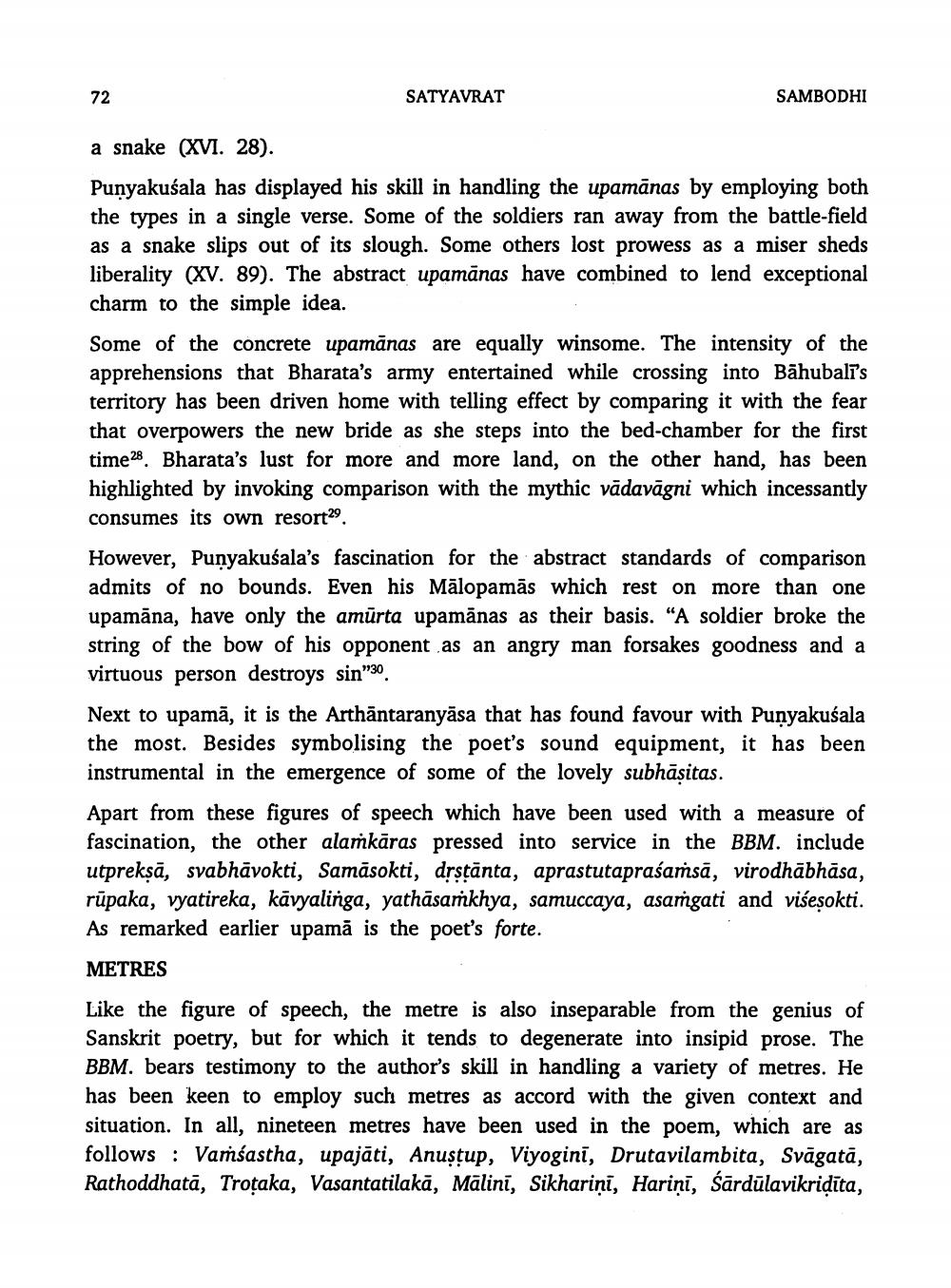________________
72
SATYAVRAT
SAMBODHI
a snake (XVI. 28). Punyakusala has displayed his skill in handling the upamānas by employing both the types in a single verse. Some of the soldiers ran away from the battle-field as a snake slips out of its slough. Some others lost prowess as a miser sheds liberality (XV. 89). The abstract upamānas have combined to lend exceptional charm to the simple idea. Some of the concrete upamānas are equally winsome. The intensity of the apprehensions that Bharata's army entertained while crossing into Bāhubali's territory has been driven home with telling effect by comparing it with the fear that overpowers the new bride as she steps into the bed-chamber for the first time28 Bharata's lust for more and more land, on the other hand, has been highlighted by invoking comparison with the mythic vādavāgni which incessantly consumes its own resort29. However, Punyakusala's fascination for the abstract standards of comparison admits of no bounds. Even his Mālopamās which rest on more than one upamāna, have only the amūrta upamānas as their basis. "A soldier broke the string of the bow of his opponent as an angry man forsakes goodness and a virtuous person destroys sin"30.
Next to upamā, it is the Arthāntaranyāsa that has found favour with Punyakusala the most. Besides symbolising the poet's sound equipment, it has been instrumental in the emergence of some of the lovely subhāṣitas. Apart from these figures of speech which have been used with a measure of fascination, the other alamkāras pressed into service in the BBM. include utpreksā, svabhāvokti, Samāsokti, drstānta, aprastutaprašaṁsā, virodhābhāsa, rūpaka, vyatireka, kavyalinga, yathāsamkhya, samuccaya, asamgati and višesokti. As remarked earlier upamā is the poet's forte. METRES
Like the figure of speech, the metre is also inseparable from the genius of Sanskrit poetry, but for which it tends to degenerate into insipid prose. The BBM. bears testimony to the author's skill in handling a variety of metres. He has been keen to employ such metres as accord with the given context and situation. In all, nineteen metres have been used in the poem, which are as follows : Vaṁśastha, upajāti, Anuştup, Viyogini, Drutavilambita, Svāgatā, Rathoddhatā, Trođaka, Vasantatilakā, Mālini, Sikhariņi, Hariņi, śārdūlavikridīta,




